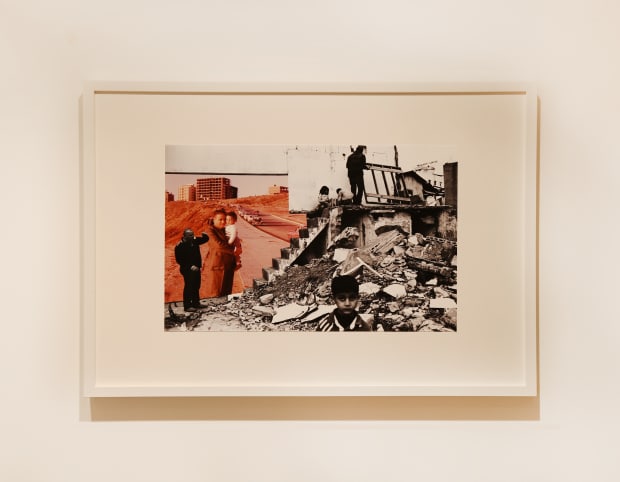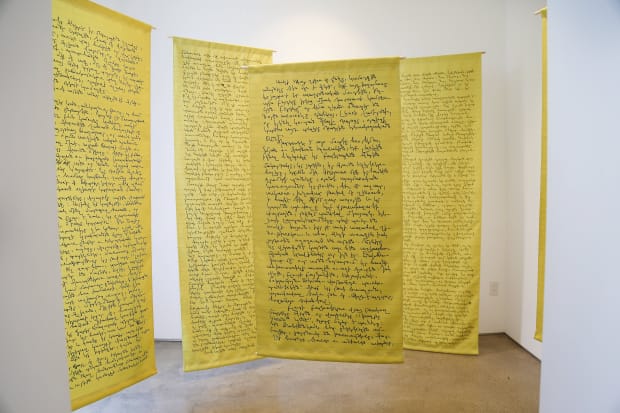-
Oshagan employs photography, film, collage and installation to present a layered and multidisciplinary vision: knitting a narrative that intertwines documentary with the imaginary, text with image, fact with speculation, personal with collective history. How The World Might Be entangles past-present-future and imagines the possibility of what was and what might or might not be.
-

-

-

The Artsakh Scrolls
The Artsakh Scrolls imagine a possible future for Artsakh: a community now colonized and violently uprooted from its indigenous lands. The scrolls collect the scattered fragments of this community into a panorama of life and possibility.
Inspired by Asian narrative forms and prayer/magic Medieval Armenian scrolls, they are constructed from fragmented cutouts of residents of Artsakh from Oshagan’s photographs from Artsakh between 1999 and 2007. The scroll backgrounds are pages from Oshagan’s grandfather Hagop Oshagan’s notebooks—a novelist who was himself exiled from his homeland by the Armenian Genocide in 1915. The scrolls create a space that connects past catastrophes to the present. Contextualized by this history of genocide and violence, the scrolls also speak to a cyclical process of history that ebbs and flows where resistance and decolonization are still possibilities. They celebrate indigenous strength and resilience against the overwhelming power and violence of the colonizer.
-

-

-
but for the happenstance of history
The Western Armenian language, ripped apart by genocide and uprooted from its indigenous lands, has existed only in the diaspora for over 100 years. During this time, its communities have been continually battered by further instability, war and generational displacement. It is spoken and written by a handful of diasporic communities but few, if any, are able to sustain it. It is now on the United Nations’ endangered languages list, on the verge of extinction. Beirut is one of Western Armenian’s last bastions.
This film is a speculative, fragmented and layered exploration of the contours and rhythms of this language. An attempt to gather its fragments, to reconnect them it through image and sound. Image as language, image as dialect, tenuous language as image. It is researched and imaged in the small neighborhood of Bourj Hammoud in Beirut.
Ara Oshagan: How The World Might Be
Past viewing_room













